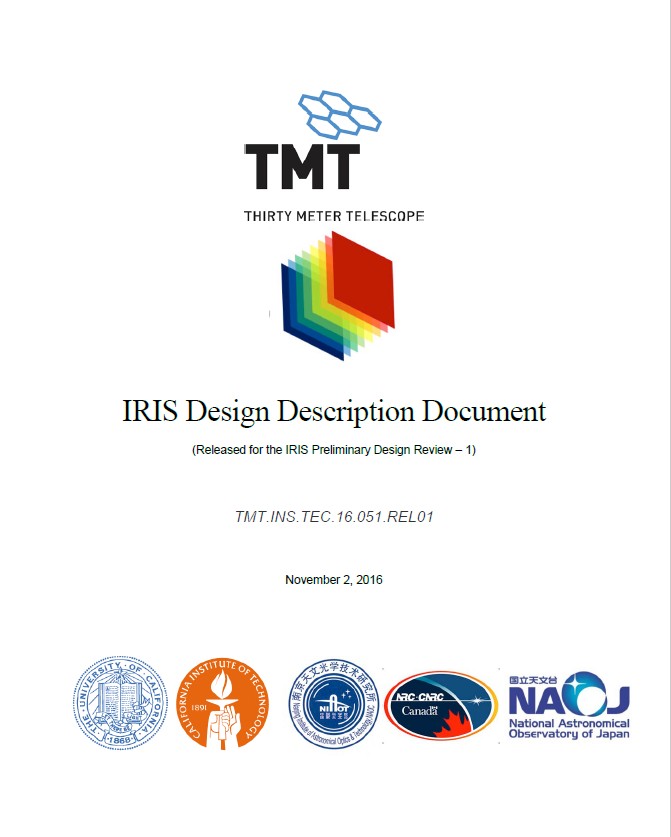The international project, thirty meter telescope (TMT) infrared imaging spectrograph (IRIS), passed the preliminary design review (PDR-1) at the TIO (TMT International Observatory) headquarter on November 19th, 2016.
IRIS, which is one of three first light science instruments, is a precise astronomical instrument with both of integral field spectroscope and wide field imaging function in near infrared (0.84–2.4um). It is composed of wavefront detector (OIWFS), wide field imager, lenslet type and slicer type Integral field spectrographs (IFS). The instrument is developed by the worldwide collaboration, including California Institute of Technology (Caltech), University of California at Los Angles (UCLA), National Research Council Canada (NRC), National Astronomical Observatory of Japan (NAOJ), Nanjing Institute of Astronomical Optics and Technology (NIAOT) and so on.
NIAOT sent an associate research fellow, Kai Zhang, to Caltech as a visiting scholar of Chinese Academy of Sciences (CAS) for working with the IRIS group in September, 2013. At the preliminary design phase (PDP), he was in charge of optical design for slicer IFS, including Pre-optics, Image slicer, TMA collimator.
The IRIS preliminary design phase took 3 years (2013-2016), and made significant change in design scheme. At the aspect of instrumental optical configuration, the parallel setting between science imager and spectrographs changed to the serial connection. The field of view of science imager increased to be 34”x34”, and the field of view of spectrographs moved to the central field of imager (Max. field of view is 4.4”x2.25”) in order to highlight the spectroscopy importance at the cost of central obscuration. The instrumental optics was redesigned by using TMA instead of refractive optics. It’s good to make the structure more compact, avoid chromatic aberration and keep consistency in the whole band. The preliminary design scheme proposed a new 3-mirror design for image slicer in order to satisfy the requirement in image quality and manufacture feasibility.
In PDR-1, the optimized and improved design achieves and exceeds the requirement of specification. The IRIS group get high compliment from the review committee, and successfully pass the review.

photo of review conference
